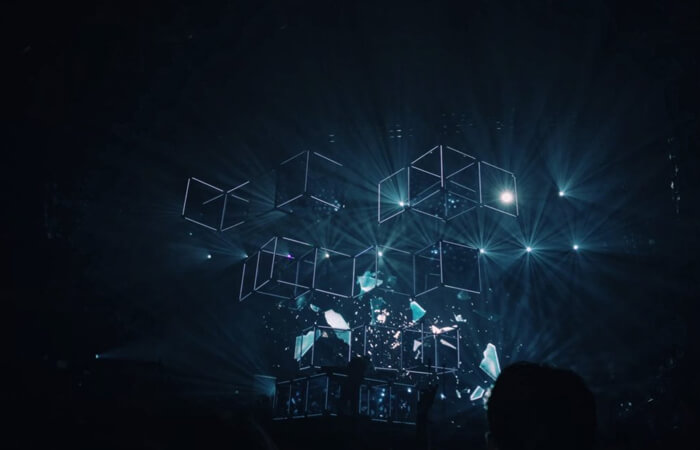
Understanding Smart Contracts
With the emergence of blockchain technology the term “smart contract” is being heard more often than ever. Understandably, there is a lot of confusion as to what smart contracts are, why they are being called smart contracts and whether or not they are the same as the legal contracts the majority of us are used to. Even attorneys are getting nervous as to there potential impact on the legal industry. Smart contracts are not going to revolutionize the legal industry but, it is important to understand their relationship with blockchain technology.
What Are Smart Contracts?
In a nutshell, smart contracts are automated and self executing promises with the conditions and protocols of performance written into lines of computer code. They are used to memorialize, facilitate, execute and enforce agreements in an automated manner. They accomplish this by first converting a traditional natural language agreement into non-reversible computer code, and then writing that computer code onto a blockchain.
It is important to understand that smart contracts do not need to use blockchain technology to function. In contrast, blockchain applications depend heavily on the use of smart contracts for a lot of their functions. As explained in “Introduction to Blockchain Technology” the core benefits of blockchain is its ability to record transactions in the most secure manner without using an intermediary. The automated feature of smart contracts is the essential tool that facilitates, executes and enforces these transactions on a blockchain. The combination of blockchain technology and the use of smart contracts is what allows the autonomous transactions to occur in a highly secure manner and without an intermediary.
How Are Smart Contracts Created?
Smart contracts are most effective when either digital assets or devices that can be remotely automated are involved.
Below is an example of how a blockchain built smart contract can be formed:

Step 1:
An agreement is created between two parties setting forth mutual promises, terms and conditions.
Ex: Justin agrees to purchase Barbara’s entire digital art collection for the price of $100,000.00 dollars. Justin must send full payment to Barbara on September 1, 2019 and Barbara agrees to transfer her entire digital art collection to Justin within 24 hours of receipt of full payment from Justin.
Step 2:
The agreement is then converted into computer code.
Step 3:
That computer code is then programmed onto a blockchain in the following manner.
a. Code is programmed onto the blockchain
b. Justin has transferred the equivalent of $100,000.00 U.S. of cryptocurrency to his digital wallet which is secured on the blockchain.
c. Barbara uploads her entire digital art collection to be stored on the blockchain pending receipt of funds from Justin.
d. A calendar application is connected to the code to indicate the timing of performance by both parties. This is an example of an Oracle, or third party information source used to verify the occurrence or non-occurrence of specific conditions written into the smart contracts.
Step 4:
Execution of the contract is automated based on the conditions precedent and performance indicators.
On September 1, 2019, payment will be automatically transferred from Justin’s digital wallet to Barbara’s digital wallet and within 24 hours of the transfer, the digital file storing the art collection will be transferred to Justin.
The example above demonstrates, how the agreement is memorialized on the blockchain, automatically executed and verified without any other actions from the original parties or third party intermediary.
Below are some general examples of how Smart Contracts are currently being used with blockchain applications:
Peer to peer payments:
Cryptocurrencies such as Bitcoin have been the most well recognized application of blockchain technology. The use of blockchain technology creates an ecosystem in which the transfer of cryptocurrencies can be made from one party to another in a secure, efficient manner irrespective of geographic locations and without the need for a third party intermediary to execute the transfer. As illustrated in the example above, smart contracts are used to facilitate such transfers.
Supply chain management:
Supply Chain Management is another one of blockchain technology’s strongest applications. After creation of a product, manufacturers assign unique identifiers to each individual product which is then stored on a blockchain. Anywhere in the world, those goods can be tracked at each stage of its delivery process to ensure authenticity, custody and regulatory compliance of the product within the supply chain system. Smart contracts have been used to allow automated communication, tracking and payment of goods between manufacturers, suppliers and consumers in a secure and transparent manner, without the need for a third party intermediary.
Internet of Things (IOT):
We are experiencing the emergence of “smart devices”. The analyst firm Gartner reports that the IOT industry is rapidly growing. Thanks to smart devices, when the thermostat reaches a certain level, the heat goes off in your house. When the clock hits 6 am, your coffee maker activates, and when you run out of coffee beans, your device can automatically order more. One central home hub can be used to operate your lights, television, music sound system and more. These smart devices use smart contracts to communicate with each other based on pre-programmed cues, prompts and triggers. Smart contracts on a blockchain add an extra layer of security that consumers desire to protect and secure user data.
Are Smart Contracts Legally Enforceable?
An obvious question from reading the IOT example of smart contract applications is how does an alarm clock have a legally enforceable contract with a coffee maker? The answer is that it does not. The term “smart contract” can be misleading because it is not always referring to legally enforceable agreements. There are however, circumstances (like the example described in the “How Are Smart Contracts created?” section) in which a smart contract can be determined as a legally enforceable agreement. There are also smart contracts that may not be legally enforceable on its own but, are used to automate and execute terms, conditions and performances of a legally enforceable contract.
Ex: A divorce settlement written in natural language and on paper, which includes a clause that states all child support payments will be paid in cryptocurrency.
In that example, the divorce settlement agreement is the legally enforceable contract which will be using a smart contract to carry out some of its payment terms.
Why Are Smart Contracts Called Smart Contracts?
If they are not like traditional natural language contracts and are not even always legally enforceable, then why are they called smart contracts? Nick Szabo, a computer scientist, cryptographer and legal scholar is commonly credited for his contributions to the development of smart contracts. He called them “smart” because he felt that they were far more functional than the traditional paper contracts written in natural language.
They may not be far more functional than traditional contracts but the term “smart” is appropriate because they represent a form of smart technology. Smart technology, such as smartphones, smart watches, smart pens, smart speakers, etc…, are all examples of electronic devices that have a level of automation and remote connectivity. Smart contracts are correctly labeled as smart because they share those same features.
How Effective Are Smart Contracts?
Smart contracts are not a perfect solution for all transactions. First, they are non-reversible. Therefore the terms and conditions for execution must be precise, and the code must be perfect. Humans are imperfect so the risk of incorrect code or bugs will always exist. Additionally, smart contracts are hampered by coding limitations. As sophisticated as computer coding and programming has become, it is still quite unrealistic to expect that the full terms and conditions of all types of transactions can be completely transformed from natural language to a legally enforceable and completely automated computer code. And, things become even less efficient when non-digital assets that cannot be directly tied to a blockchain are involved.
In conclusion, attorneys can exhale for the time being. Smart contracts aren’t going to disrupt the legal industry and put them out of business. However, they are a key component of blockchain technology and other technological innovations. Anyone operating within an emerging technology field should definitely take the time to understand and learn more about them.
